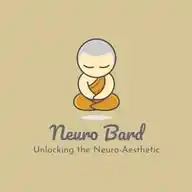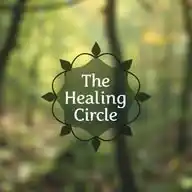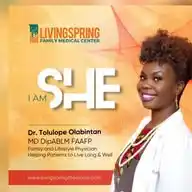
Neuro Bard
12 subscribers
About Neuro Bard
We are "Unlocking the Neuro-Aesthetic" Healing is not about being okay, it's about being honest. Allow yourself to feel, process, and heal. You are strong, capable, and deserving of care and compassion.
Similar Channels
Swipe to see more
Posts

A woman who has healed many traumas on her own and still keeps her heart pure is not just a woman. She's an alchemist. She is magic

*I’m in my “let them” era..* _Let them judge you._ _Let them misunderstand you._ _Let them find better._ _Let them gossip about you._ _Let them lose you._ _*Let them.*_


*Raymond Cattell* Raymond Cattell was a British-American psychologist known for his work on personality, intelligence, and motivation. Key Contributions 1. *16 Personality Factor (16PF) Model*: Cattell developed a personality assessment tool that measures 16 personality factors. 2. *Fluid and Crystallized Intelligence*: Cattell proposed a theory of intelligence that distinguishes between fluid and crystallized intelligence. Fluid and Crystallized Intelligence 1. *Fluid Intelligence*: The ability to reason, think abstractly, and solve problems in novel situations. 2. *Crystallized Intelligence*: The ability to use learned knowledge and experience to solve problems. Applications 1. *Personality Assessment*: Cattell's 16PF model is widely used in personality assessment and research. 2. *Intelligence Research*: Cattell's theory of fluid and crystallized intelligence has influenced research on human intelligence.

*Schachter-Singer Theory (Two-Factor Theory of Emotion)* _The Schachter-Singer Theory, developed by Stanley Schachter and Jerome Singer, proposes that emotions result from the interaction of two factors: physiological arousal and cognitive labeling._ Key Components 1. *Physiological Arousal*: A state of heightened physiological activity, such as increased heart rate or blood pressure. 2. *Cognitive Labeling*: The process of assigning a label or meaning to the physiological arousal, based on environmental cues. Key Points 1. *Two-Factor Theory*: Emotions result from the combination of physiological arousal and cognitive labeling. 2. *Arousal + Label = Emotion*: The theory proposes that emotions are determined by the interaction of physiological arousal and the cognitive label assigned to that arousal. Applications 1. *Emotional Experience*: Understanding the Schachter-Singer Theory can inform our understanding of emotional experience and the role of cognition in emotion. 2. *Emotional Regulation*: Recognizing the importance of cognitive labeling can help us develop strategies to regulate and manage emotions.

NEURODEVELOPMENTAL DISORDER #Disorders typically emerging in childhood, affecting brain development and functioning. Autism Spectrum Disorder: Poor social skills + repetitive behavior [Leo Kanner] ✨Explanation: Involves challenges in social interaction, communication, and restricted or repetitive behaviors. ADHD (Attention-Deficit/Hyperactivity Disorder): Inattention + hyperactivity [Virginia Douglas] ✨Explanation: Difficulty sustaining attention, excessive restlessness, or impulsivity disproportionate to age. Intellectual Disability: Low IQ + adaptive issues [Alfred Binet] ✨Explanation: Significant limitations in intellectual functioning and adaptive skills (e.g., self-care). Specific Learning Disorder: Reading/writing/calculation problems [Samuel Kirk] ✨Explanation: Struggles with specific academic skills despite normal intelligence. Motor Disorders: Tics, coordination issues ✨Explanation: Includes Tourette’s (involuntary tics) or Developmental Coordination Disorder (poor coordination).

When you choose silence as a way to punish someone, what you're really saying is: "I care more about my ego than our connection." This kind of silence doesn’t resolve conflict; it only amplifies it, leaving the other person with uncertainty and pain. You may feel that withholding your words gives you control, but in the long run, the price is an increasingly fragile relationship. How many times has silence pushed you further away instead of bringing you closer? It's time to reflect on the impact this behavior has on your most important relationships.

*Self-Determination Theory (SDT)* _Self-Determination Theory, developed by *Edward Deci and Richard Ryan*, proposes that human behavior is motivated by three innate psychological needs: autonomy, competence, and relatedness._ Key Components 1. *Autonomy*: The need to feel a sense of control and agency over one's actions. 2. *Competence*: The need to feel effective and capable in one's actions. 3. *Relatedness*: The need to feel connected and valued by others. Key Points 1. *Intrinsic Motivation*: SDT suggests that intrinsic motivation (motivation that comes from within) is more sustainable and leads to greater well-being. 2. *Extrinsic Motivation*: External rewards or pressures can undermine intrinsic motivation. 3. *Basic Psychological Needs*: Autonomy, competence, and relatedness are essential for human growth and well-being. Applications 1. *Motivation*: Understanding SDT can inform strategies to enhance motivation and engagement. 2. *Education*: SDT can be applied in educational settings to promote student motivation and learning. 3. *Workplace*: SDT can be applied in the workplace to enhance employee motivation and job satisfaction.

*Attachment Theory* _Attachment Theory, developed by John Bowlby and Mary Ainsworth, is a psychological framework that explores the importance of early relationships between children and their caregivers._ Key Components 1. *Secure Attachment*: A healthy attachment style characterized by feelings of safety and security. 2. *Anxious-Preoccupied Attachment*: An insecure attachment style marked by anxiety and insecurity. 3. *Dismissive-Avoidant Attachment*: An insecure attachment style characterized by avoidance and emotional distance. 4. *Fearful-Avoidant Attachment*: An insecure attachment style marked by fear and avoidance. Key Points - *Early Relationships*: Attachment styles are shaped by early experiences with caregivers. - *Attachment Styles*: Attachment styles can influence relationships throughout life. - *Impact on Development*: Attachment styles can affect emotional regulation, self-esteem, and relationships.

"Men ought to know that from the brain, and from the brain only, arise our pleasures, joys, laughters and jests, as well as our sorrows, pains, griefs and fears. Through it, in particular, we think, see, hear and distinguish the ugly from the beautiful, the bad from the good, the pleasant from the unpleasant” Hippocrates- 5th Century B.C.













